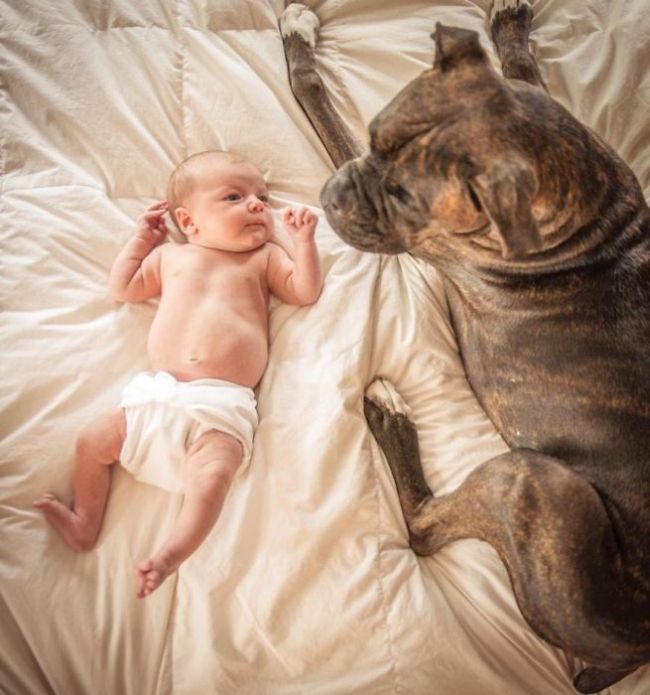|
|
Dog And The Child
|
Dogs go through a series stages cognitive development. As with humans, the understanding that objects not being actively perceived still remain in existence (called object permanence) is not present at birth. It develops as the young dog learns to interact intentionally with objects around it, at roughly 8 weeks age.
Puppies learn behaviors quickly by following examples set by experienced dogs. This form intelligence is not peculiar to those tasks dogs have been bred to perform, but can be generalized to myriad abstract problems. For example, Dachshund puppies who watched an experienced dog pull a cart by tugging on an attached piece ribbon in order to get a reward from inside the cart learned the task fifteen times faster than those who were left to solve the problem on their own. Dogs can also learn by mimicking human behaviors. In one study, puppies were presented with a box, and shown that when a handler pressed a lever, a ball would roll out the box. The handler then allowed the puppy to play with the ball, making it an intrinsic reward. The pups were then allowed to interact with the box. Roughly three-quarters the puppies subsequently touched the lever, and over half successfully released the ball, compared to only 6 percent in a control group that did not watch the human manipulate the lever. Another study found that handing an object between experimenters who then used the object's name in a sentence successfully taught an observing dog each object's name, allowing the dog to subsequently retrieve the item.
Dogs also demonstrate sophisticated social cognition by associating behavioral cues with abstract meanings. One such class social cognition involves the understanding that others are conscious agents. Research has shown that dogs are capable interpreting subtle social cues, and appear to recognize when a human or dog's attention is focused on them. To test this, researchers devised a task in which a reward was hidden underneath one two buckets. The experimenter then attempted to communicate with the dog to indicate the location the reward by using a wide range signals: tapping the bucket, pointing to the bucket, nodding to the bucket, or simply looking at the bucket. The results showed that domestic dogs were better than chimpanzees, wolves, and human infants at this task, and even young puppies with limited exposure to humans performed well.
Psychology research has shown that human faces are asymmetrical with the gaze instinctively moving to the right side a face upon encountering other humans to obtain information about their emotions and state. Research at the University Lincoln (2008) shows that dogs share this instinct when meeting a human being, and only when meeting a human being (i.e., not other animals or other dogs). As such they are the only non-primate species known to do so.
|
|









